In this article published by Cultura Colectiva, Soledad Pérez acquaints us with the so-called Harlem Renaissance, a movement developed in the twentieth century in the United States in which black communities reclaimed their identity. Together with one of its leading exponents, Archibald Motley. A must-read article, translated for you by Ilaria! :) Here, the link to the original.
It was the period when names such as Jackson Pollock, Mark Rothko and Willem de Kooning, among many others, were breaking the usual structures of classical or figurative painting, while still others were aiming at a modern and existential realism, as in the case of Edward Hopper, but all of them, despite their different currents, were consolidating the identity of modern art in the United States. The modernist taste erupted in an unstoppable boom around the world and introduced the radical changes in both ideological and social issues of the twentieth century into art; however, these names in particular would imprint contemporary North American identity and aesthetics on their canvases: among them were Archibald Motley and other artists who shared the scene in African American art of the time.
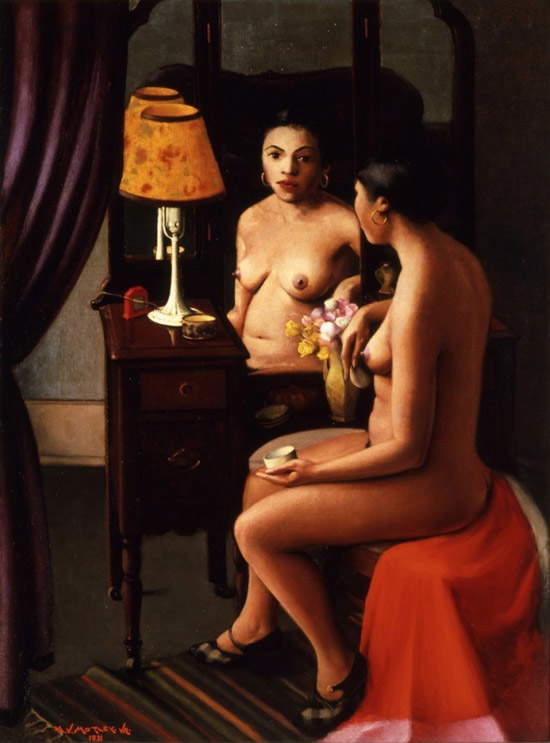 |
| Archibald Motley, Brown girl after the bath; 1931; Columbus (Ohio), Columbus Museum of Art |
It also remained confined to a minority an art that defended its social role but, more importantly, reconstructed its identity and contributed to that of the avant-garde in the United States.
Motley was one of the most significant painters in capturing in his works the African American life of the revolutionary years of the first half of the twentieth century. He was one of the leading exponents of the Harlem Renaissance (Harlem Renaissance) or the New Negro Movement (The New Negro Movement), currents that were also fundamental to contemporary twentieth-century art, particularly in its first thirty years.
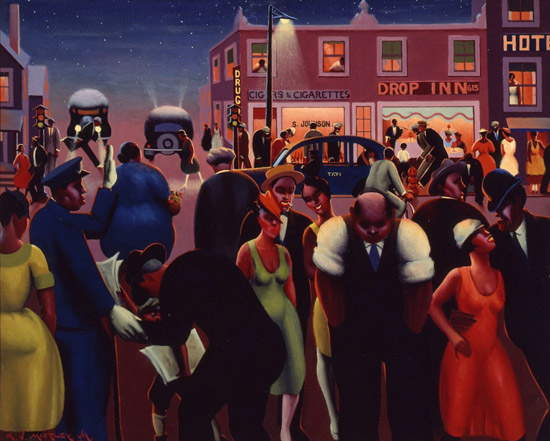 |
| Archibald Motley, Black Belt*; 1934; Hampton (Virginia), Hampton University Museum. *The Black Belt (literally Black Belt) is a region of Alabama characterized by the strong presence of African Americans. |
Although Archibald was born in New Orleans, he did not spend most of his life there, but rather in Chicago. Nor was he in Harlem when he produced many of his works; however, his portraits of the new black elites in the city where he lived reflected the social, cultural, and artistic boom of the so-called Harlem Renaissance, the famous neighborhood in upstate New York that was the epicenter of the movement and whose influence spread to other cities in the United States.
One inspiration had arisen under the influence of literature, painting, and jazz: the recovery of black identity and its incorporation and influence in social life, after a history of slavery and finally emancipation, was developing within contemporary history and beginning to make its mark. Music played a key role in this new identity; the blues, and especially jazz, became the major genres of the time not only for the black community but for the American community at large, or at least those that enjoyed a rich and varied cultural life. It is no accident that an exhibit at the Duke University Museum in Duke, North Carolina, called the painter the modernist of the jazz era.
 |
| Archibald Motley, Hot rhythm*; 1961; Chicago (Illinois), private collection. *The rhythm (rhythm) of the music of America’s blacks is referred to as hot, hot. |
Archibald Motley depicted typical scenes of this cultural life without neglecting historical memory. Two concrete stages can be identified in his activity: the first related to his classical academic training (Motley graduated from the Art Institute of Chicago), while the contemporary one is distinguished by a transgressive use of color and form, this being his most famous period.
Significant is his use of both techniques, particularly in works such as the portraits of his grandmother (Portrait of My Grandmother, 1922; Mending Socks, 1924), in which an accentuated realism, as well as a formal use of color and light reflect, his precision and knowledge of the parameters of classical pictorial art, as well as his ability to capture representative fragments of a story. Her grandmother had been a slave: the simplicity of her personality, as noted by her appearance depicted by Motley in her paintings, similarly reflects the rural life and work of previous generations. However, the avant-garde impulse was already creeping in at this time; he will also make some forays by focusing on painting with clearly Symbolist elements, which can be seen especially in the artist’s Self-Portrait (Myself at Work), 1933. It would be after his sojourn in Paris (where colonies of African Americans were actively participating in the city’s artistic manifestations, among the major currents of the time), and after being influenced by the avant-garde movements of Mexico, that Archibald would totally reveal his contemporary side, and it was this ability to capture the historical memory of his ancestors, as we see from the realist intimism of the portraits of his grandmother, that would turn into vivid color and much more transgressive features that are noticeable in the depictions of the characters of the Chicago in which he lived. In many of these, one can see a cubist character and, in general, a radical change in the perspective and composition of his work.
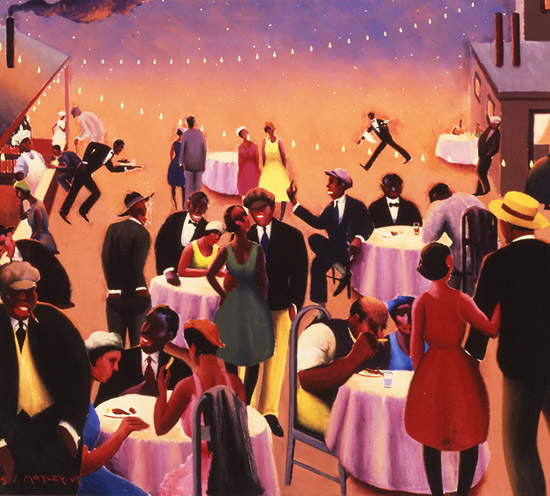 |
| Archibald Motley, Barbecue; 1934; Washington (DC), Howard University Gallery of Art. |
He now depicted scenes of nightlife, interracial interaction (not only do we see African American characters in his paintings, but also Latinos and Caucasians), the impact of jazz on his generation, meals, gatherings, and various social practices. In sum, of the cultural and social movement that many African American groups were experiencing at a key moment in the social and artistic apogee itself. Various critics regard Motley as a painter who continues to be relevant in this sense, as he believes that his works maintain a continuing historical impact over time. However, Motley is not the only representative of the plastic arts of the Harlem Renaissance. We also recall, among others, Justin Bua, Thomas Hart Benton, and Ernie Barnes, who distinguished themselves in portraying the New Negro boom through their experimental techniques, for example, the use of painting very much related to the comic style of the time. Nonetheless, representatives of the Negro Movement in other disciplines were also instrumental, such as Claude Mckay, who was among the first black writers to be published by a recognized publishing house, and Jean Toomer, who spoke through prose and poetry about the rural and urban life of black communities in the United States, as well as Jessie Fauset, who wrote the first novel about African American middle-class life from a woman’s point of view. Certainly we cannot forget Alain Leroy Locke, a writer and philosopher who would call such a movement New Negro that consolidated for the first time the identity of this community outside the margins of slavery in the United States, aiming at open social resistance and denunciation against racial segregation, the recovery and reintroduction of its history as well as its active participation in the intellectual and economic life of the country.
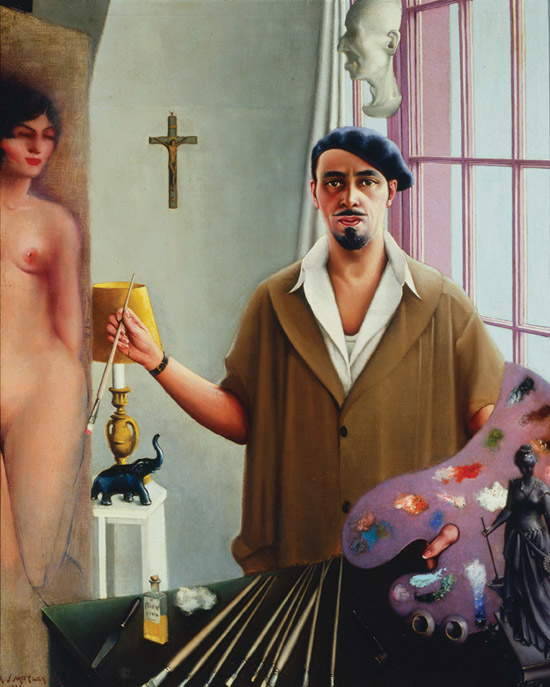 |
| Archibald Motley, Self-Portrait ( Myself at work); 1933; Chicago (Illinois), private collection |
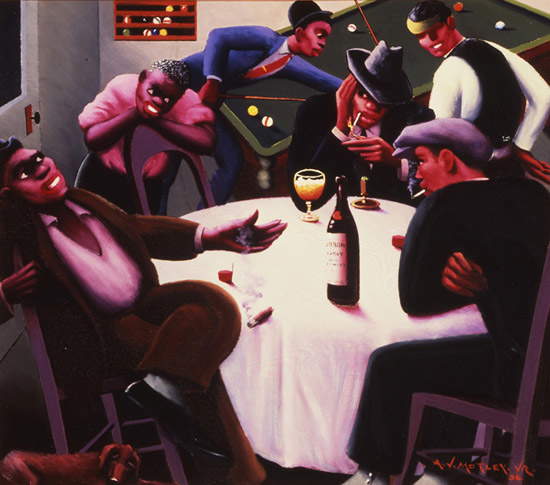 |
| Archibald Motley, The liar (The liar); 1936; Washington (DC), Howard University Gallery of Art |
 |
| Archibald Motley, Portrait of my grandmother; 1922; Chicago (Illinois), private collection |
Warning: the translation into English of the original Italian article was created using automatic tools. We undertake to review all articles, but we do not guarantee the total absence of inaccuracies in the translation due to the program. You can find the original by clicking on the ITA button. If you find any mistake,please contact us.